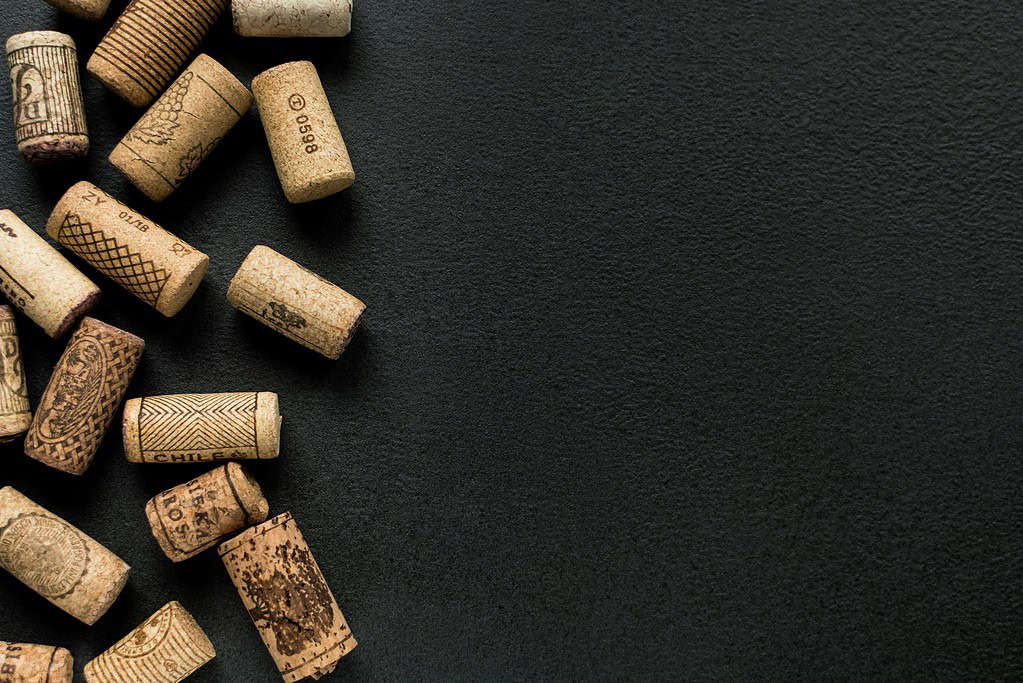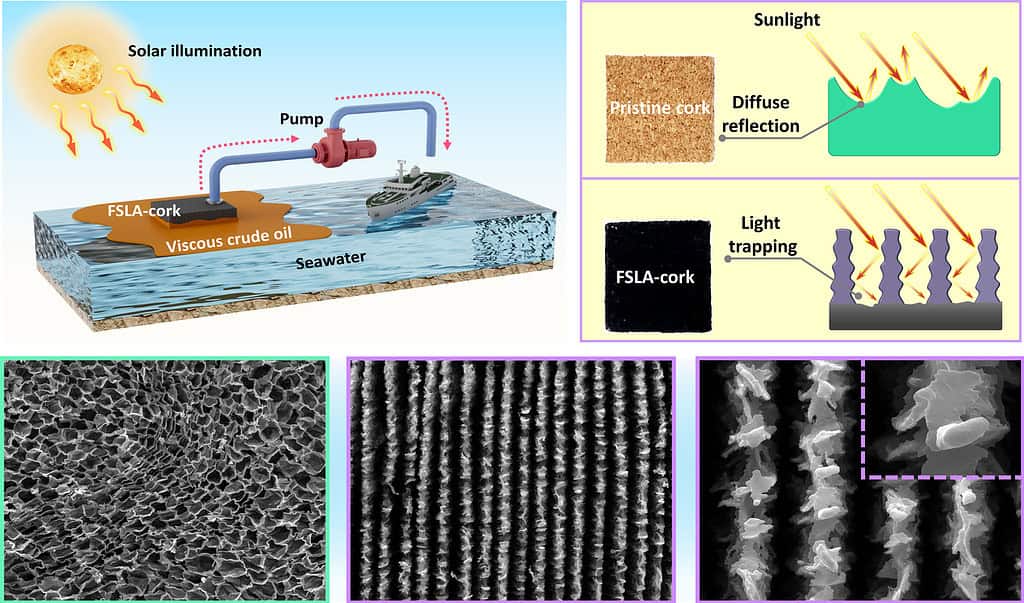Oil spills are catastrophic environmental disasters that wreak havoc on marine ecosystems, lasting for decades and affecting marine wildlife, coral reefs, and coastal regions. The number of oil spills has dropped in recent years, but they’re still a significant environmental problem. Traditionally, chemical dispersants have been employed to manage these spills, but these chemicals often come with long-term problems like increasing toxicity of the environment.
Now, a groundbreaking study published in Applied Physics Letters introduces a promising and sustainable alternative using an unlikely hero: cork.

Cork is derived from the bark of the cork oak tree, predominantly found in Mediterranean regions, especially in Portugal. These trees are remarkable not only for their longevity, often living for hundreds of years, but also for their regenerative bark. The bark can be harvested every 9-10 years without killing the tree, making cork a highly renewable resource. The harvesting of cork bark has an additional environmental benefit as it prompts the trees to increase their biological activity and carbon storage, contributing positively to carbon emission mitigation.
We know it mostly from wine bottles, but cork is actually a versatile material, used in various industries for its unique properties. It can be used in construction and home decor, where it works as a thermal and acoustic insulator. Cork finds use in flooring and wall coverings. And it’s even used in the fashion industry for making eco-friendly accessories such as wallets, handbags, or even shoes.
But now, researchers want to use cork for something else entirely.
Cork, oil, and lasers
Cork was previously highlighted as a material that can absorb oil in 2020. The idea is straightforward: cork repels water, but can absorb other liquids. It’s also very light, which means you can drag it over the water’s surface and have it absorb oil without becoming waterlogged.

But in the new work, researchers used laser pulses to create a rough microstructure on the cork’s surface. This makes it even more hydrophobic (rejects water).
This discovery came almost by accident.
“In a different laser experiment, we accidentally found that the wettability of the cork processed using a laser changed significantly, gaining superhydrophobic (water-repelling) and superoleophilic (oil-attracting) properties,” study author Yuchun He said. “After appropriately adjusting the processing parameters, the surface of the cork became very dark, which made us realize that it might be an excellent material for photothermal conversion.”
“Combining these results with the eco-friendly, recyclable advantages of cork, we thought of using it for marine oil spill cleanup,” co-author Kai Yin said. “To our knowledge, no one else has tried using cork for cleaning up marine oil spills.”
The scientists tested out several treatment variations to create the optimal cork characteristics at a low cost. They were able to also create a durable material that can withstand the conditions you’d expect out at sea. They also managed to give the cork a very useful characteristic.
The laser-treated cork warms very quickly in the sun, because the deep grooves increase the surface area exposed to sunlight. So, in just a few seconds, the cork can warm significantly. This heat can then be transferred to the spilled oil, lowering its viscosity and making it even easier to collect. In lab experiments, this cork collected oil out of the water within only two minutes.
Cleaning out oil
When oil spills occur, they affect the environment in a number of ways. They form a thick layer on the water surface, blocking sunlight and depleting oxygen levels in the water. This creates a hostile environment for marine life, leading to long-term ecological damage and the deaths of marine organisms.
The prompt and effective cleanup of oil spills is crucial to minimizing their environmental impact. Traditional methods, while sometimes effective, can have detrimental secondary effects. Finding a balance between effective oil cleanup and environmental preservation is critical, and cork’s natural properties, combined with advanced laser treatment, offer a promising solution.
The research team is optimistic about the future applications of their discovery. The next steps involve integrating cork’s photothermal capabilities with electrothermal materials to create a comprehensive, all-weather system for oil recovery. This system aims to enhance the efficiency of oil spill cleanups across various conditions and locations.
The study was published in Applied Physics Letters DOI 10.1063/5.0199291






